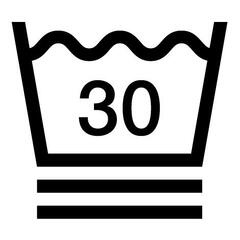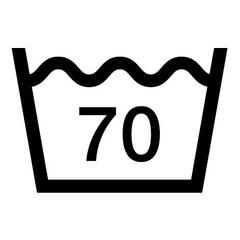FORCLAZ
€0.00
Tax included
Modular and very well insulated three layer jacket for very cold temperatures down to -33°C. It is made for Arctic hiking.
BENEFITS

Ease of use
Oversized zips with long removable cords that can be used with gloves
Abrasion resistance
Use of a robust fabric (147 g/sqm; 70 denier) on the areas needing protection
Flexibility
3in1 jacket. The waterproof jacket and padded jacket can be worn separately
Warmth
Padded jacket with thick wadding (209 g in size L). Adjustable storm hood
Optimum temperature
Recommended temperatures when hiking slowly in the snow T1* -25°C T2* -33°C
Waterproof
Waterproof membrane (8000 mm Schmerber). Main seams taped
Ventilation
Breathable membrane and underarm ZIPS for effective ventilationTECHNICAL INFORMATIONS
Why should Decathlon have an Arctic collection? A real challenge for our teams?
When trekking, weather conditions vary according to activity and location, which requires specific clothing ranges. A challenge? YES! Years are required to develop equipment. Working with adventurers was fundamental, as we do not have all the knowledge, experience and ideas to take into account all the requirements of arctic exploration and make the outfit as comfortable as possible.
Why choose a 3in1 modular jacket? Because it is simply the most efficient.
A 3in1 modular jacket us the combination of a very warm layer (down jacket) and a hyper protective layer (windproof/blizzard proof & waterproof jacket). The warmth stays inside! We exploit the multi-layer* system to the full (several layers of clothing that all have different functions can be layered: 1 protective layer against the wind, rain and snow + 1 warm layer to fight against the cold + 1 base layer that wicks damp away.
*have you ever heard about the multi-layer system? it isn't complicated and it’s very important
This comes from Northern countries: Canada, Sweden, Finland, Norway, Iceland. Layering is a way of dressing used by the locals to remain comfortable outside during activities, no matter what the temperature. The system means using several layers of clothing that all have different functions. This technique is clearly essential to perfectly regulate your body temperature during rest and effort in particular.
The protective layer on our 3in1 polar jacket: its main technical characteristics.
This waterproof jacket has:
- a high collar (over the chin) and a deep anti-blizzard storm hood that is adjustable for optimal protection against very aggressive and turning winds
-Removable high performance synthetic fur with long hairs
- a 100% windproof, 100% waterproof membrane and 100% taped seams
-Adjustable cuffs with extreme cold hook and loop strips
- One windproof and anti-snow intrusion skirt
- A reinforcement fabric on exposed areas.
- a high collar (over the chin) and a deep anti-blizzard storm hood that is adjustable for optimal protection against very aggressive and turning winds
-Removable high performance synthetic fur with long hairs
- a 100% windproof, 100% waterproof membrane and 100% taped seams
-Adjustable cuffs with extreme cold hook and loop strips
- One windproof and anti-snow intrusion skirt
- A reinforcement fabric on exposed areas.
Feather or synthetic insulated padded jacket? watch out for pre-conceived ideas
The feather-down insulation is lighter and compresses better in dry weather.
However, for equivalent warmth, the synthetic insulation retains heat much better when it is wet or damp. It is also much easier to maintain. The same applies to sleeping bags. Most adventurers on winter bivouacs lasting several days use sleeping bags with synthetic insulation. They perform much better over time and remain warm even when damp!
However, for equivalent warmth, the synthetic insulation retains heat much better when it is wet or damp. It is also much easier to maintain. The same applies to sleeping bags. Most adventurers on winter bivouacs lasting several days use sleeping bags with synthetic insulation. They perform much better over time and remain warm even when damp!
Its women's cut enables great freedom of movement when trekking and bivouacking. While remaining warm!
This asymmetric jacket is specifically adapted to women's bodies when trekking and enables great freedom of movement and insulation. The jacket is long and covers the lower buttocks, we have added 2 short comfort zips with gussets on the hips. This maintains important protection against cold wind without impeding or restricting movement, both when trekking and bivouacking in a seated position.
Pockets are adapted to winter hiking. Everything gets cold, even batteries!
RED Pocket is a safety pocket to keep your telephone warm. The inner padded jacket has large chest pockets for the hands that will warm up fingers stiffened by the intense cold and store small equipment. The jacket has large inside pockets on the chest and below to hold a ski mask and gloves for example. The adapted design enable that the front pockets do not come in the way of the belt strap when you carry a rucksack.
Jacket designed for use with thick and thin gloves. Front zip: simple or other cursors?
We have tried everything: single, double slider, with or without a magnet, etc. But when your fingers are numb and the fabric is very cold, simple things work in the long term. So main front zip with a single slider! It is by far the one that is can be used with gloves in the cold. Our partner adventurers have also made this choice! Our buttons and zip fasteners are over-sized (+ pulls).
Pocket system that is specific to exploration, observation and orientation: the Napoleon pocket
Napoleon pockets are used in the entire Arctic collection. Hidden under your jacket's storm flap, this pocket can be used without opening your jacket. It is ideal to read a map, easily protect your binoculars and camera while staying warm!
Tip: our large chest pockets are made from mesh to guarantee optimal breathability and ventilation and reduce the damp in your gloves, which are warmed by your body.
Tip: our large chest pockets are made from mesh to guarantee optimal breathability and ventilation and reduce the damp in your gloves, which are warmed by your body.
We often talk about warmth but not enough about thermal regulation.
The zips under the arms enable comfortable temperature regulation. The long and loose fit leaves plenty of space for intermediate insulating layers and this enables efficient and immediate thermal regulation. Because the no.1 enemy in winter hiking is perspiration. Particular focus was paid to the zip design so it could be used in one sole movement when active and without removing the parka. Video tip
In extreme cold, why do you need a jacket with ventilation?
You have probably already experienced this! During a winter hike, the effort quickly becomes intense and generates heat, TOO MUCH heat. It’s also well know that enemy no.1 isn't lack of heat but rather perspiration. Some simple rules to follow: adapt your rhythm to perspire as little as possible, wear several layers and use mechanical ventilation as often as necessary. This 3-in-1 parka helps to optimise this, as for the rhythm, we trust you!
Why do you need a waterproof jacket in extreme cold ?
Even if Arctic ground conditions are extremely humid depending on when you go, this jacket will protect you perfectly from very intense snow and even rain (taped seams) but we made this choice for another reason! The waterproof fabric provides an impenetrable barrier against the damp and will keep you dry without fail. This barrier will reduce damp getting inside and will encourage drying and keep its flexibility
To understand, how is the water resistance of our component measured?
We measure a fabric's resistance to water pressure, expressed in terms of the height of a water column in mm (based on the ISO 811 standard). The higher the water pressure, the more waterproof the fabric. The main component of our jacket has a waterproof rating of 8000 schmerber, meaning it can withstand the pressure exerted by an 8000 mm column of water. This is equivalent to 100L/sqm/hour of water for 3 hours, i.e. a mountain storm.
How is recommended temperature measured for this equipment?
We tested the temperature of thermal neutrality T1 (neither hot nor cold) in a laboratory of this set (modular jacket + dungarees). The results were achieved in compliance with standard ISO 11079. We respected the following conditions: intensity of use that corresponding to the metabolism during a slow hike (4km/h) in the snow with a 10 kg load on the back.
What are these temperatures
T1 - The temperature of thermal neutrality or Thermoneutral zone is a safe temperature that can be tolerated for a long period (neither hot nor cold).
T2 - The cold balance temperature is a safe temperature that can be tolerated for a long period with a slightly cold body, feelings of cold especially at the extremities.
T3 and T4 are threshold temperatures. It is not comfortable but it is possible to use the product temporarily.
T2 - The cold balance temperature is a safe temperature that can be tolerated for a long period with a slightly cold body, feelings of cold especially at the extremities.
T3 and T4 are threshold temperatures. It is not comfortable but it is possible to use the product temporarily.
When pulling a pulka or sledge, which temperatures can we hope to withstand with this outfit?
Pulling weight on the snow is easier than carrying it on the back (it divides the perceived weight by almost 3), but it will not be effortless! or a lot of heat! These results are obtained in a laboratory and during trials in the field in the coldest locations of the enabling the following temperatures to be obtained: T1 = -25°C T2 = -33°C for a small 10 kg load and for a heavier load > 30 kg T2 = -40 °C (4km/h) or even more if the effort is very intense.
Can you pull a pulka or sled with this equipment? but what is a pulka?
In Nordic hiking, a pulka replaces a large rucksack. It is mainly used for Nordic raids (lasting a few days to a few weeks). You can carry all your equipment with this means of transport: tent, duvet, personal belongings.
Please note that all temperatures stated are indicative. They act as a guide not an absolute truth
Although our equipment is tested in the field in the coldest places on earth, and our protocolled laboratory tests provide highly objective results, each individual, their experience and feelings are different. In extreme conditions, it's important to keep in mind that these temperatures are indicative. Each individual should adapt their equipment to their own needs to guarantee their own safety.
Are we talking about a Set? Our laboratory mannequin was equipped using the Arctic-specific multi-layer principle.
Set used for thermal dummy laboratory testing:
- 3in1 modular jacket PARKA JACKET ARCTIC 500 DRY MEN
- Forclaz trouser dungarees ARCTIC BIB 500 DRY LCT-ECH-14188-2
- Hiking hat - Layer 1 Quechua LCT-ECH-14189-2
- Socks Quechua LCT-ECH-14195-2
- Fleece Quechua LCT-ECH-14190-2
- Trekking Hiking gloves
- Shoes
- 3in1 modular jacket PARKA JACKET ARCTIC 500 DRY MEN
- Forclaz trouser dungarees ARCTIC BIB 500 DRY LCT-ECH-14188-2
- Hiking hat - Layer 1 Quechua LCT-ECH-14189-2
- Socks Quechua LCT-ECH-14195-2
- Fleece Quechua LCT-ECH-14190-2
- Trekking Hiking gloves
- Shoes
Tips for storage and maintenance
 ANY TYPE OF IRONING ALLOWED.
ANY TYPE OF IRONING ALLOWED.
 MAXIMUM WASH TEMPERATURE OF 30°C. VERY MODERATE TREATMENT.
MAXIMUM WASH TEMPERATURE OF 30°C. VERY MODERATE TREATMENT.
 DO NOT TUMBLE DRY.
DO NOT TUMBLE DRY.
 MAXIMUM WASH TEMPERATURE 70°C. NORMAL TREATMENT.
MAXIMUM WASH TEMPERATURE 70°C. NORMAL TREATMENT.
 IRONING AT A MAXIMUM IRON SOLEPLATE TEMPERATURE OF 200°C.
IRONING AT A MAXIMUM IRON SOLEPLATE TEMPERATURE OF 200°C.
Storage tips
Store in a dry, ventilated place.
TESTS AND WARRANTY
Test product
To help you dress effectively, Forclaz - in partnership with Decathlon Research - provides you with recommended usage temperatures for its extreme cold product lines. Tests are carried out in an chamber to measure the thermal insulating properties of products on a dummy. Physiological studies carried out by the Decathlon Research teams supplement these results to assess the level of warmth/cold perceived by users in real-life use.
Warranty
5 Years
Agree by
All our products are tested in the field by user representatives and these tests are run in parallel to our laboratory tests. By conducting this comprehensive and demanding dual testing process, the technical features and design of our FORCLAZ products is being continually improved. Your regular feedback is also taken into account to constantly improve our range.